Professor Judith Mackay is a member of the GHA and is a Hong-Kong based tobacco control researcher and activist.
She is Senior Advisor, Vital Strategies/Bloomberg Initiative to Reduce Tobacco Use; Director of the Asian Consultancy on Tobacco Control; and Senior Policy Advisor to World Health Organisation.
She has authored 12 atlases on health topics. In addition to many international awards, ranging from the WHO Commemorative Medal and the TIME 100 award to the first BMJ Group Lifetime Achievement Award, she has been identified by the tobacco industry as one of the three most dangerous people in the world.
She recently contributed to the Dangerous Women project, an initiative of the Institute for Advanced Studies in the Humanities at the University, which analyses the dynamics, conflicts, identities and power relations with which women live today.
Read Judith’s contribution here …
“It wasn’t my intention to be a dangerous woman or to find myself in danger, simply by being committed to gender equality and better health.
There was nothing in my medical degree course at the University of Edinburgh in the 1960s to predict that I would be labelled by the tobacco industry as one of the three most dangerous people in the world, or that I would need to be offered 24-hour police protection by the Hong Kong government.
Perhaps the first hint of danger in my life was when I arrived in Hong Kong in 1967 at the peak of the Chinese Cultural Revolution – which spilled over into Hong Kong – with Communist schools and banks barricaded and manufacturing bombs, and big character posters saying ‘Down with imperialists’ and ‘British go home.’ Street riots rocked the colony, bringing with them waves of bombings, looting and arson attacks. British rule became precarious, but held – only just – when Chinese Premier Chou Enlai reined in the HK Red Guards.
A Dangerous Feminist
I became a committed feminist at about the same time (and still am today, 50 years on), and this did not lie easily in colonial Hong Kong, where even senior government figures and judges would joke about rape. People viewed me as dangerous and subversive (and wrote many letters to the press saying just that). This could spill into physical abuse, such as when a friend’s husband twisted a necklace (engraved with the sign for women) round my neck, lifted me off the floor and snarled that “Women will never be the equal of men as they are not as strong,” while I dangled helplessly in the air, powerless. I determined never to let that happen to me again. Even more bizarrely, another woman friend only recently told me that the husband of a mutual friend had tried to rape her, saying ‘This is for Judith Mackay,’ as he perceived his wife was coming under my feminist influence.
A Dangerous Subversive in The Medical Profession
In the 1980’s, I earned the fury of my own medical profession by writing a health series in the South China Morning Post, Hong Kong’s leading English language newspaper. The article broke the then-traditional power mode of doctor-patient relationships by encouraging women, in particular, to keep their own personal health record, and participate in their own health care decisions. ‘When your doctor tells you…’ became ‘When you and your doctor decide…’ A senior gynaecologist stormed up to the hospital where I worked, found me in Medical Outpatients, pinned me against a wall, and said ‘This newspaper series has to stop or you will be in trouble.’ I said that this sounded like a threat, and he said ‘You have powerful enemies in the medical profession, and had better watch out.’ He went on to say that only that morning he was inserting a copper intra-uterine device in a patient, who had meekly asked ‘Is this a copper coil?’ and he was furious – asking her ‘Have you been reading Dr. Mackay’s column in the SCMP?’ – the trigger to his visit.
A Danger to Big Tobacco
I’ve faced the greatest danger since moving from clinical to preventive medicine. There were three main reasons for making the shift from hospital medicine to public health. First, during my work as a physician in the 1970s and 1980s, I came increasingly to feel that clinical work was like ‘a band-aid.’ In fact, we had a maxim on our male medical ward that we never admitted a non-smoker, our wards being full of people with end-stage tobacco illnesses, often too late to prevent morbidity and mortality.
Second was the realisation that although women’s health in those days was defined as reproductive health, tobacco was killing far more women than were dying from birth control – and the tobacco industry was actively recruiting women with promises of beauty, slimness, popularity and emancipation.
What finally galvanised my determination to combat tobacco use was the response to a piece I wrote on tobacco as part of my series on women’s health in the South China Morning Post. One of the British transnational cigarette companies published a booklet labelling me as ‘entirely unrepresentative and unaccountable.’ In contrast, the self-promotional booklet claimed ‘the tobacco industry comprises identifiable, legal, accountable, commercial organizations.’ This booklet, denying the health evidence (‘it has not been proven that these illnesses are actually caused by smoking’) and claiming to be an ‘important source of reliable information’ on smoking, so enraged me that from that moment on I worked on tobacco control, abandoning curative hospital medicine in 1984.
Why was my job so dangerous? It was partly location. The tobacco industry thought they could gallop their Marlboro cowboy into Asia, and it was theirs for the taking. They even said ‘What do we want? We want Asia,’ with the dream of converting the 60% of men who smoked local cigarettes to switch to international brands, and the second dream of persuading Asian women to start smoking. Given the numbers concerned, it would not have mattered if every smoker in the UK had stopped smoking the next day, if they could have captured the massive Asian markets.
There was no career structure and no pay, but I set about thwarting their goals. I was in touch with colleagues in the UK and elsewhere who were unstinting in their assistance, but it was a lonely job in Asia in the 1980s.
This brought me into conflict with one of the world’s most wealthy and powerful industries – and its supporters. I’m frequently subjected to verbal abuse and have been described over the years as sanctimonious, dogmatic, pontificating, meddlesome, heretic, puritanical, hysterical, prejudiced, a ‘Nanny,’ and more recently a ‘jihadist’.
In 1993, a smokers’ rights group in the USA described me as ‘psychotic human garbage, a gibbering Satan, an insane psychotic just like Hitler, using fatuous, smarmy drivel and distortions, and diatribes full of putrid corruption, lies, conspiracy, and total censorship.’ They concluded by stating that I was ‘devoid of any sanity, any morality, or any human-being-ness of any kind’, was ‘nothing more than an evil-possessed, power-lusting piece of meat’ and they threatened to ‘utterly destroy’ me!
The group had made similar threats to a US government health official, so the last sentence – perceived by the FBI as a death threat – had to be investigated by the agency, and I was added-on to that investigation. At this point, I was offered 24-hour police protection by the Hong Kong government.
The industry twice threatened, very publicly, to take me to court. Nothing came of it, of course – I was on rock-solid ground on the facts – but such tactics were attempts to intimidate me, and a ploy to cast doubt on my credibility in the minds of the public.
Such offensive words, the death threat, and the menace of litigation, completely failed to divert me. I said, robustly and publicly, that I was absolutely not a suicidal type, and that if I were to be found ‘knocked down by a bus,’ the tobacco industry was guilty until proven innocent!
That is not hyperbole. I had to give evidence as an expert witness in a major tobacco smuggling trial, involving British American Tobacco cigarettes being smuggled into China. The chief witness was murdered, and eleven others disappeared. Another witness jumped out of a window – on the 22nd floor. I had to report to the Independent Commission Against Corruption that I was being followed. They put a stop to it, but it was an eerie experience, as was being cross-examined by a tobacco industry lawyer.
There have also been clandestine aspects to my work. In 1986, a go between phoned to tell me that a ‘Deep Throat’ associated with US Tobacco had informed him of a plan to imminently launch smokeless tobacco (sucking, chewing tobacco and snuff) in Hong Kong. To this day, I do not know the identity of ‘Deep Throat,’ not even whether it is a ‘she’ or a ‘he.’ Immediately, I contacted the Hong Kong government and helped to plan a ‘pre-emptive strike’ – a ban on the importation, manufacture and sale of smokeless tobacco products. Other whistle-blowers have contacted me from within the tobacco industry, always a sensitive and potentially explosive situation. For their safety, I will say no more.
Working In Dangerous Places
I have also worked in some very dangerous areas in Asian countries, some under martial law, some at war, some under attack by rebels in their own countries. I was in Cambodia giving a slide presentation when there was an almighty explosion and the ceiling started falling down. Everyone else dived under the tables. Perhaps my finest hour as a Brit: I simply said, ‘Next slide please.’ It turned out to be a captured ammunition cache that had been placed in the central square and blown up by the government, but with no notice to anyone.
In 1990, I was held at gunpoint by armed Mongolian palace guards who, seeing me appearing out of the dark at the Government guest house after an evening walk, had no idea who I was or what to do. I had to gently talk them down, in a language they did not understand. Incidentally, the Minister of Health in Mongolia told me that during that first visit, they held a cabinet meeting as they thought I might be a spy sent from the west. They had prepared a school project to present to me, but I was much more interested in the tax, economic and political issues regarding tobacco, even their border security in preventing smuggling. He said the cabinet had concluded I was not a spy, and instead I had highlighted the breadth of issues involved in tobacco control.
More recently, I have worked with the North Korean (DPRK) government on tobacco control on three occasions, but am probably safer there than in London.
Promoting Gender Equality
Less dangerously, I have been able to push for equal gender representation in public health policy-making, including data collection and in the wording and clauses of the WHO Framework Convention on Tobacco Control. I have been able to promote women for various international awards, to serve on international committees and to be invited to speak at major conferences. For example, when invited to assist the 10th World Conference on Tobacco or Health held in Beijing in 1997, I stipulated that I would work pro bono as long as at least half of the keynote plenary speakers, chairmen, and committee were female. Despite initial uncertainty from the organisers, the event turned out to be the “best conference ever” and set the standard for subsequent conferences.
I promote women because if women are not in those positions, then the issue of women and tobacco gets ignored. This resulted in some resentment from male (never female) colleagues in the early days, some of which I found very hurtful. Ultimately, though, I have found it useful being female. Some countries embarking on tobacco control found it less threatening to invite me to be an Advisor – and it’s my knowledge, experience and expertise, valued in Asia in both sexes, that gets results. In addition, being based in Asia and knowing Asia, but being British rather than Asian, helped me to be seen as politically neutral.
I have wondered if working in tobacco control today is as dangerous as it was. I think not. It does require a certain type of interested and involved person to go into the field, but public health has now moved to the mainstream of health sciences. There are also many more people working in the field – it is not as isolated as it was 40 years ago. Personally, I intend to work until I am 100 – I practice Tai Chi (taiji) and reserve my two sword programmes’ cut and thrust for continuing to fight the tobacco industry.
I have worn the ‘dangerous’ label as a badge of honour, but hope the day is near when women aren’t labelled “dangerous” simply for standing up to advocate for issues like health or gender equality. We wait.”
Read Judith’s original blog here: http://dangerouswomenproject.org/2016/08/11/judith-mackay/
Proud to be a dangerous woman – Dangerous Women Project
dangerouswomenproject.org
Today we hear from Dr Judith Mackay, identified by the tobacco industry as one of the three most dangerous people in the world.
Prof Judith Mackay’s GHA profile:
http://www.ed.ac.uk/global-health/communities-practice/members/global-members/professor-judith-mackay



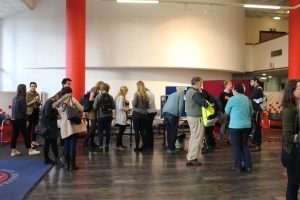
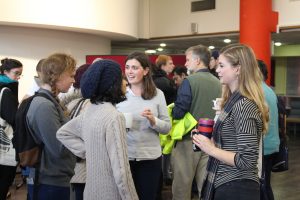

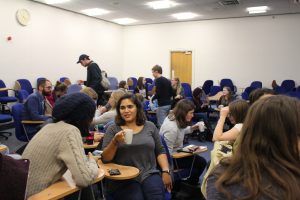
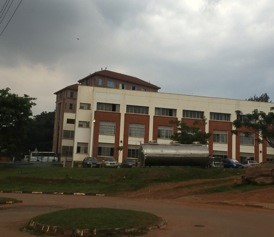
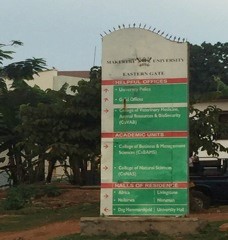



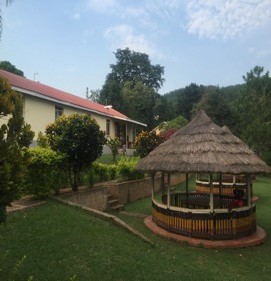

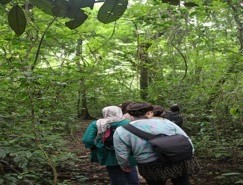





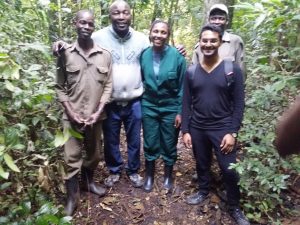

 Latest tweets
Latest tweets